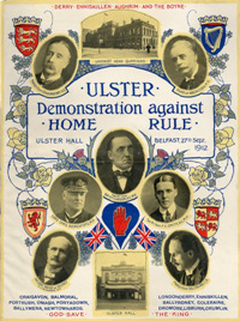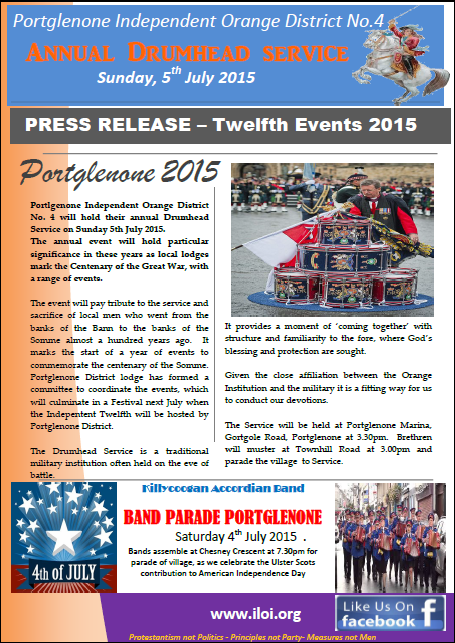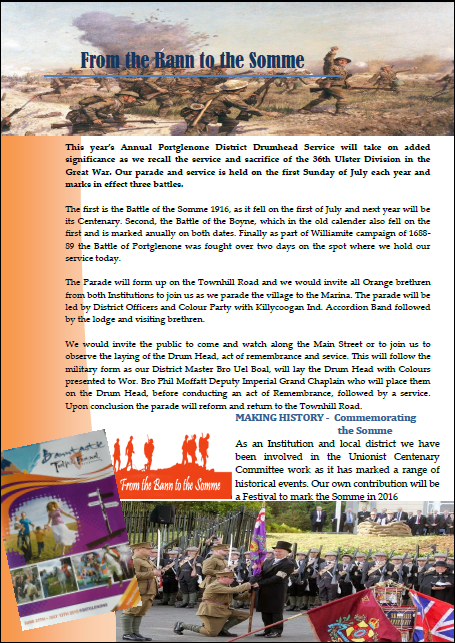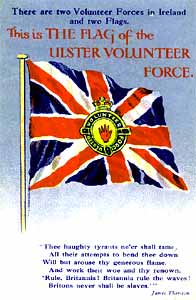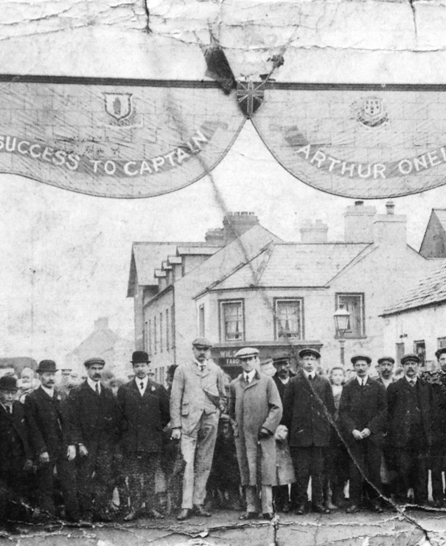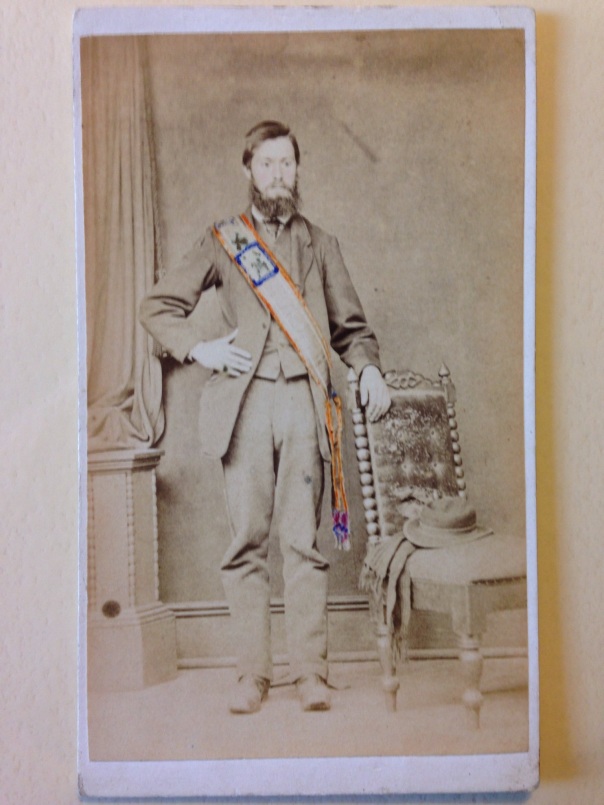Blog Archives
Portglenone Drumhead Service
Portlgenone Independent Orange District No. 4 will hold their annual Drumhead Service on Sunday 5th July 2015. The annual event will hold particular significance in these years as local lodges mark the Centenary of the Great War, with a range of events.
The event will pay tribute to the service and sacrifice of local men who went from the banks of the Bann to the banks of the Somme almost a hundred years ago. It forms the start of a year of events to mark the centenary of the Somme. The local District lodge has formed a committee to coordinate the events, which will culminate in a Festival next July when the Indepentent Twelfth will be hosted by Portglenone District.
The Drumhead Service is a traditional military institution often held on the eve of battle. It provides a moment of ‘coming together’ with structure and familiarity to the fore, where God’s blessing and protection are sought. Given the close affiliation between the Orange Institution and the military it is a fitting way for us to conduct our devotions.
The Service will be held at Partglenone Marina, Gortgole Road, Portglenone at 3.30pm. Brethren will muster at Townhill Road at 3.00pm and parade the village to Service.
This year’s Annual Portglenone District Drumhead Service will take on added significance as we recall the service and sacrifice of the 36th Ulster Division in the Great War. Our parade and service is held on the first Sunday of July each year and marks in effect three battles.
The first is the Battle of the Somme 1916, as it fell on the first of July and next year will be the Centenary. Second the Battle of the Boyne, which in the old calender also fell on the first and is marked anually on both dates. Finally as part of Williamite campaign of 1688-89 the Battle of Portglenone was fought over two days on the spot where we hold our service today.
The Parade will form up on the Townhill Road and we would inbite all Orange brethern from both Institutions to join us as we parade the village to the Marina. The parade will be led by District Officers and Colour Party with Killycoogan Ind. Accordian Band followed by the lodge and visiting brethern.
We would invite the public to come and watch along the Main Street or to join us to watch the laying of the Drum Head and our sevice, and act of remembrance. This will follow the military form as our District Master Bro Uel Boal, will lay the Drum Head with Colours presented to Wor. Bro Phil Moffatt Deputy Imperial Grand Chaplain who will place them on the Drum Head, before conducting an act of Remembrance, followed by a service. Upon conclusion the parade will reform and return to the Townhill Road.
Snapshot from History
At this time the men of the 36th Ulster Division moved to Seaford on the Sussex coast of England. Lord Kitchener inspected the Division there on 27 July 1915, and later remarked to Carson “your Division of Ulstermen is the finest I have yet seen”. Another inspection took place, by King George V, on 30 September.
3-6 October: the Division moved to France, although the artillery remained in England until November.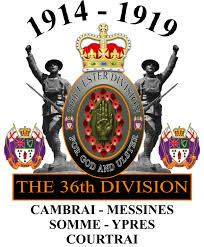
The Ulster Division initially concentrated in the area around Flesselles, some ten miles north of Arras. Gradually, men were sent in groups for familiarisation with trench warfare conditions, and were attached to the regular army 4th Division for the purpose in the (at this time) quiet are north of the River Ancre near Albert.
On 21 October the Division was moved away from the fighting area towards Abbeville, where it spent most of the winter of 1915-16 continuing training. One of the Brigades was attached to 4th Division for several weeks at this time and the artillery finally rejoined.
Come and Join us as we mark this historic event.
HAPPY NEW YEAR
The Officers and Members of McNeillstown ILOL No 46 would like to wish all our friends and supporters a Happy New Year and we send fraternal greetings to all our brethren across the globe.
We look forward to a year of events and aetwvties and ask that if you are a member make it your New Years Resolution to play your part in our growth and sucess. If not then why not come and join us in 2015.

As a lodge our resolutions Include doubting membership and completing the renovation of our Hall.

Closing the Gates Celebrations – Siege of Derry Begins
Shutting of the Gates
Generally the first Saturday in December – commemorating the 7th December (OS*) anniversary of the Apprentice Boys’ Shutting of the Gates. *Old style calandar.
The Apprentice Boys of Derry Commemorative events begin at midnight Friday, on the eve of the next day’s commemoration, with the firing of a cannon. 1 shot and then 3 shots symbolises the Thirteen Apprentice Boys who shut the gates against the advancing armies of King James.

Members of the Parent Club will then walk around the walls taking part in the Touching of the Gates: commencing with Ferryquay Gate, moving on to Bishop Gate, Butcher Gate and finally Shipquay Gate. This represents a symbolic closing of the gates.

Early morning, the Siege flags are erected on Walker’s Plinth.

The effigy of Governor Lundy is brought out of the Memorial Hall and erected on a scaffold located in Bishop’s Street. Lundy was a Governor of the City during the Siege. He deserted his position and the besieged people, leaving under the cover of the night dressed as an ordinary soldier. In fact, he later served William III; Lundy was a traitor to the City, though not to the King.

At 10am in the morning the General Committee of the Apprentice Boys Association opens in the Memorial Hall. All visiting Clubs parade from Waterside Railway Station, departing at 11.30am, to the Memorial Hall via Hawkin Street.
The main parade leaves Society Street at 1.15pm, via the Diamond, to Carlisle Road and up Wapping Lane to St Columb’s Cathedral for the Annual Thanksgiving Service for the Shutting of the Gates, which commences at 2.00pm.

At the conclusion of Divine Service a Wreath is laid by the Officers of the host Parent Club on the Siege Heroes Mound in the grounds of the Cathedral.

The parade then re-forms and returns to Bishop Street for theBurning of Lundy, which takes place at approximately 4pm.

Before Lundy is set alight the soles of Lundy’s boots are removed and presented to a member of the Parent Club, or to a selected Club, as a commemorative memento of the Year’s Duties to the Association.
The Governor and Officers of General Committee take the salute in Bishop Street as the Parade returns to the Waterside via London Street. With the visiting Branch Clubs returning to their transport, the Governor and Officers return to the Memorial Hall to close General Committee at around 5.00pm.
The Shutting of the Gates is smaller than the summer’s Relief of Derry Commemorative Parade. Those who attend are mostly Parent Clubs and a number of visiting Clubs.
ANNIVERSARY OF THE FORMATION OF THE ULSTER VOLUNTEER FORCE 1913
ANNIVERSARY OF THE FORMATION OF THE ULSTER VOLUNTEER FORCE 1913
Ulster Volunteer Force (UVF)
While Westminster was debating the first and second Home Rule bills, in 1886 and 1893, scattered, small-scale drilling by unionists took place in Ulster, on local initiative. On 13th December 1912, during the third home rule crisis, the Ulster Unionist Council (UUC) decided officially to establish a paramilitary body, the Ulster Volunteer Force (UVF).
It did so partly because the protest demonstrations it had been organising until then against Irish self-government appeared to be having no impact; their activities were dismissed as ‘bluff and blackmail’ by the British government and by nationalist MPs. Already, by February 1912, 12,000 of them were drilling at 100 centres scattered throughout all nine northern counties, having been given legal sanction by sympathetic magistrates. Their leadership felt an initiative was necessary to coordinate this paramilitary action and bring it under effective party control, and also to prepare for the worst – the real prospect of having physically to resist Dublin rule.
The flag of the UVF, 1914 ©
By mid 1914, 90,000 men had joined the UVF. It was being led by a retired ex-Indian army general, Sir George Richardson, had motor vehicles, medical and nursing corps, and a troop of cavalry. Its members were meeting regularly for instruction and practice in the parks and demesnes of sympathetic landowners and in local Orange Halls. To increase its credibility and thus its political impact, and to satisfy the demands of its virtually unarmed recruits, the UUC organised the illegal import of weapons from Germany for its use; 25,000 rifles and 3 million rounds were ‘run in’ mainly through Larne, a port north of Belfast, on the night of 24th-25th April 1914. The overall effect of raising and arming the force was measurably to boost the level of unionist confidence and defiance and to make it much more problematical for Westminster to impose Dublin rule on Ulster – to attempt to do so would inevitably result in substantial casualties. Unionist militancy encouraged Irish nationalists likewise to form and arm a paramilitary body – the Irish Volunteer Force – in order to apply comparable pressure on British ministers.
In World War I, Carson encouraged the UVF to enlist in the British Army, a process facilitated by the War Office’s decision to create the 36th (Ulster) Division specifically for its members. The 36th fought bravely and with heavy losses at the Somme, it secured the right of Ulstet to remain part of the United kingdom. It was revived during the Anglo-Irish war (1919-21) to defend Ulster from Sinn Fein/IRA terrorism. Under strong Unionist Party pressure, the British government agreed in mid-1920 to incorporate the force into the newly created Ulster Special Constabulary (USC). The purpose of the USC was to reinforce the Royal Irish Constabulary in Ulster just as the Black and Tans and the Auxiliaries were already doing elsewhere in Ireland. Subsequently, the Specials took a leading role in countering IRA attacks in what shoild realistically be regarded as the Ulster-Irish War. A Northern Ireland police force, the Royal Ulster Constabulary was established in mid 1922; in 1927, 49 per cent of its members had belonged to the USC.
Local MP Commemorated
Commemoration service for first British MP to die in WW1

A local Ulster MP Cpt Arthur O’Neill was the first British MP to die in World War One. His life has been commemorated at Westminster on the 100th anniversary of his death.
The service for Capt Arthur O’Neill, who was elected as the Ulster Unionist Party MP for Mid-Antrim in 1910, was conducted by former Church of Ireland primate of All Ireland, Archbishop Robin Eames.
Capt O’Neill, father of former Northern Ireland Prime Minister Terence O’Neill, and the lodges local MP died while fighting with the 2nd Life Guards regiment at Zillebeke Ridge in Flanders on 6 November 1914, aged 38.
Arthur O’Neill, the elder son and heir of the second Baron O’Neill and Lady O’Neill of Shanes Castle, County Antrim, was educated at Eton. He was gazetted to the 2nd Life Guards from the Militia in 1897 and served in the earlier part of the South African War, taking part in the relief of Kimberley and operations in the Orange Free State at Paardeberg, the action at Dreifontein, and the action at Colesberg.


Afterwards, he served in Cape Colony, south of the Orange River, and took part in several actions, for which he was awarded the Queen’s Medal with three clasps. He was promoted to captain in 1902.
In 1902, he married Lady Annabel Hungerford Crewe-Milnes. Two of their sons were to die in action in World War Two.
Capt O’Neill represented Mid-Antrim from the general election of January, 1910 and took an active part in the formation of the Ulster Volunteer Force. Like many of the great unionist families he was anti-Home Rule and, along with Sir William Adair and the Youngs of Galgorm Castle, played a key role in the establishment of the local Ulster Volunteer Force. His military background was invaluable in establishing drilling and training regimes for recruits.
Arch in Henry Street, Harryville, erected to support Captain Arthur O’Neill in his campaign for election to Westminster in 1910. Capt O’Neill can be seen in the centre and George Young is the tall man beside him.
He rejoined his regiment only three weeks before his death. He was killed in action at Klein Zillebeke ridge in Belgium during a bayonet charge while serving with A Squadron, 2nd Life Guards and was the first sitting member of the British Houses of Parliament to be killed during the Great War.
The following is an extract from the Regimental War diary of the events of that time
” The Regt was placed in Reserve in the woods near the 4th Guards Bde H Q. At about 3.30 pm the Bde was urgently sent for and hurried towards ZILLEBEKE to support the French on the right of the Guards Bde who had been driven out of their trenches by a most determined attack.
The Regiment was dismounted under fire close to the above mentioned village and was ordered to establish iteself on the KLEIN ZILLEBEKE ridge keeping touch with the 1st Life Guards on the right who were to ? the line on the right of the Guards Brigade. Maj. the Hon. H. DAWNAY ordered the ‘B’ squadron to advance ? across the open and ? the high ground in front. ? the ‘D’ squadron was send across the ZILLEBEKE – ZWARTETEN road to ? the right flank by moving parallel to the railway. The ‘C’ troop and machine guns were kept in reserve ready to support the ‘B’ squadron. This latter squadron succeeded in reaching the edge of the wood on the ridge after ? fighting owing to the ? bring in ? of ? in?ted horses. Almost at? once the right flank of the ‘B’ became exposed to an enfilade? fire which caused Maj. DAWNAY to order the squadron to fall back slowly by troops. This order was shortly afterwards countermanded owing to French reinforcements appearing. The squadron was then ordered to fix bayonets and charge the wood which the C troop was taken by the C O to fill the gap which had occurred in between the two squadrons. This troop ? attacked the village of ZWARTETEN using the bayonet with great effect and taking a certain number of prisoners. The ‘B’ sqdn meanwhile drove back the enemy several? hundred yards and occupied a ditch 200* from their position. Owing to the trench infantry again falling back the ‘B’ sqdn and the Blues were ordered by the Brigadier to move across the ZWARTETEN – VERBRANDEN-MOLEN road and support the ‘C’ troop which was occuping a single ridge S E of the hamlet. The fighting in this vicinity became very involved owing to the somewhat precipitate retreat of the French and in consequence severe casualties were incurred. Part of the ground gained including a portion of ZWARTETEN was lost?. The situation which was becoming somewhat critical was restored by the ? of the 22nd Infantry Bde which took over the trenches held by the Bde. During these operations the ‘D’ sqdn did not fall back but retained their ground till relieved by the 60th Rifles. The confusion that occurred at one period apart from the aforementioned reason may be attributed to the very severe casualties amongst the officers / 17 in the Bde, Lord Cavan [Brigadier-General the Earl of Cavan] commanding 4th Guards Bde reported that the Bde had behaved in a most gallant manner, and that its prompt and vigorous action had saved what threatened to be a most critical situation.
MARGIN NOTES
Ref. Sheet 28
BELGIUM
*The other 3 troops of ‘C’ squadron were posted on 30th Oct at ZANBE?
Casualties
Killed
Maj. The Hon. H. DAWNAY
Maj. The Hon. A. O’NEIL[L]
2 Lieut. W. PETERSEN
Wounded
2 Lieut. T. JOBSON
Lieut. Q. SANDYS
2 Lieut. A. HOBSON
38 rank and file killed, wounded and missing
3 horses killed
The entry for this eventful day looks to have been hastily written, and is therefore difficult to read in places.

“O’NEILL, Arthur E. B., Captain, 2nd Life Guards, was KIA on the 4th [sic] November 1914. He was aged 38 and was the 2nd son of Baron O’Neill of Shane’s Castle, Randalstown.. He was the MP for Mid-Antrim and was the first MP to die in the war. He is commemorated on the Ypres Memorial (Menin Gate), Belgium.” (from Ballymena 1914-1918)
More on the officers killed on this day from Ballymena 1914-1918
His younger brother Hugh, later Baron Rathcavan, succeeded him as MP for Mid-Antrim.
 Capt O’Neill was killed three weeks after rejoining his regiment
Capt O’Neill was killed three weeks after rejoining his regimentRemember Remember
Today we mark the Great Protestant Anniversary of 5th November which marks both the birth on the 4th as well as the landing of William of Orange and the preservation of the Crown and Parliament against the Catholic terrorist plot known as the Gunpowder Plot.
Members of McNeillstown ILOL 46 joined with other lodges at Lisnagaver Installation Night, Rasharkin to mark the traditional Thanksgiving Day when our Protestant Crown and Parliament were saved from the greatest act of religious terrorism the world has ever seen. Forget ISIS the Gunpowder plotters planned to topple the government of the day in a 5/11 Plot.
REMEMBERING OUR DELIVERANCE
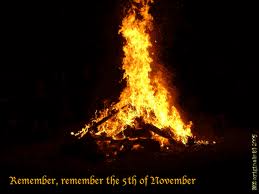 Such was the miraculous deliverance of the government that they passed a law to annually mark the day with acts of religious devotion and thanks giving. This developing into a national day of celebration and thanksgiving, know more commonly as Guy Fawkes night or Bonfire night.
Such was the miraculous deliverance of the government that they passed a law to annually mark the day with acts of religious devotion and thanks giving. This developing into a national day of celebration and thanksgiving, know more commonly as Guy Fawkes night or Bonfire night.
Sadly in the last century in Ireland the event which also marked the landing of William of Orange, has been forgotten by both church and state. While it remains popular in England we wish to see its revival here in Ireland. It is a day unlike any other in a nations history. While America and other new nations can look to an Independence day when their state was created or secured, we in the UK can llok to this this day on which not once but twice in history God saw fit to deliver this nation from its greatest foe.
The day is still marked by the Independent Orange institution, and an act of devotion was carried out when the Worshipful Master of Lisnagaver Bro. William Fenton read from our Laws and Ordinances the decree to remember and give thanks. Sadly a nation which forgets so marvelous a deliverance will be forced to repeat the peril from which it was once preserved. Today as terrorism still threatens democracy we remember that it was the Church of Rome which first created the concept of political terrorism in Europe. Sadly we see that while in those days such Catholic terrorists were punished as traitors, today they appear to be rewarded.
Tonight our Grand Master spoke of the significance of this great memorial and announced that we would be making special efforts to mark it in the years to come with plans already in motion to make next years event a bigger and more prominent event. We intend to see how the Day is marked in England and how historically it was used as a holiday for the entire community.
Local Heroes
We have already received responses from our appeal for the names and faces and stories of local heroes who both served and paid the ultimate sacrifice in both World Wars. We intend to post the information as and when it comes in then take some time to research and draw it up.
Rifleman Robert Connaughty

Rifleman Robert Connaughty from Garvaghy, Portglenone. He joined the army as a volunteer in November 1915, being posted to the 18th Btn. Royal Irish Rifles for training before being assigned to the 11th Royal Irish Rifles (South Antrims). He served with ‘A’ coy. of that battalion on the first day of the Somme when he was almost buried alive by an exploding shell which killed several of his comrades. His army service records confirm he was amongst the wounded of 1st July and was diagnosed with ‘shell shock’ on 5th July 1916. He was again wounded in 1918.
We are aware of Bro Tommy Connaghty from Drumraw and wonder if this is the family connection?
Thanks to the research conducted by the team at
The Protestant Reformation
On October 31, 1517 Martin Luther nailed his 95 Theses on to the door of the Castle Church in Wittenberg, Germany. His actions sparked the Protestant Reformation and his teachings emphasized mans sinfulness, God’s grace and salvation through faith alone. Martin Luther wasn’t the only man to protest what was going on in the Catholic churches though. Men like Huldreich Zwingli (Switzerland), John Calvin (a French theologian), and John Knox (Scotland) were also influential in the Reformation.
From these reformers comes the Five Solas:
- Sola Scriptura: Scripture alone
- Sola Fide: faith alone
- Sola Gratia: grace alone
- Solus Christus: Christ alone
- Soli Deo Gloria: to the glory of God alone
Luther’s Stand Against Rome
It was Luther’s defiance of Papal Authority which challenged the largest and richest organisation in the world at that time. He denounced its errors and ignored the orders of the Pope known as ‘Papal Bulls’, burning them publicly.
He famously nailed his 95 Theses or Points exposing the error of Rome to a church door. This sparked the debate and action which led to the Protestant Reformation. As a Lodge we feel that this great event has been erased from our history, it is neither taught in school or sadly in church, and we trust through our work that it may once more inform and inspire Protestant action in successive generations.
Lodge History Project
We have recently commissioned a lodge history to trace our past from 1823. Many men have been a part of the McNeillstown story and we would like to hear from members and their families past and present and especially old photographs or newspaper articles.
Indeed any items of historical significance would be welcome. We can either copy and return or curate them on a temporary or permanent basis.




